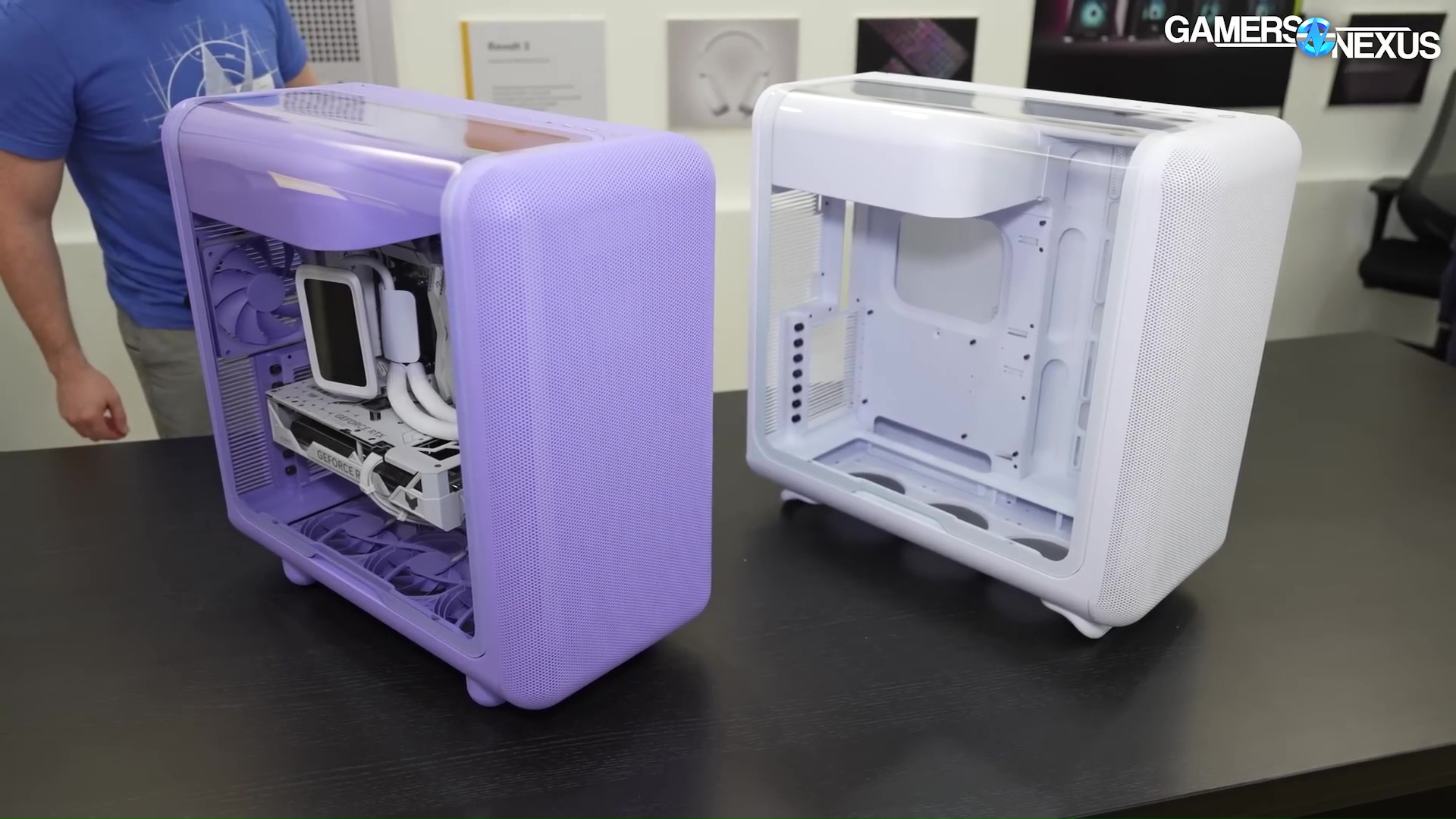Parametric Design And a Guide to Creating Adaptable, High-Performance Products with Algorithms
Parametric design is a transformative approach to product development that integrates interconnected parameters to enhance a product’s performance and adaptability. This approach maximizes the relationships between parameters like color, size, and material by defining and adjusting them to improve design results. In contrast to conventional design systems, parametric design encourages creativity by making it possible to create adaptable and dynamic solutions that are suited to changing requirements.
The use of sophisticated algorithms makes it easier to create intricate patterns and structures, changing the way engineers and designers approach architectural, industrial, and urban planning projects. Parametric design is based on systems that are naturally based on parametric principles and are inspired by biological and natural patterns.
The Flip chair, inspired by the natural beauty of wind-blown grass, combines asymmetry and craftsmanship to create a unique seating experience. Designers focused on the “flip” as the central element, allowing the bent wood to flow through gradual transitions, and infusing the piece with vitality. The challenging process of steam-bending thick wood was repeated multiple times, ensuring that each chair is handmade, one-of-a-kind, and exhibits a distinctive form, making it an elegant yet functional addition to any space.
Developed with the support of the National Taiwan Craft Research and Development Institute, the Flip chair seamlessly blends traditional craftsmanship with modern parametric design. The result is a chair that not only offers aesthetic appeal but also carries a story of innovation and meticulous workmanship. Its organic texture and thoughtful design make it a statement piece that is ideal for those seeking a functional yet artistic element to complement their home or office decor.
What are the Applications of Parametric Design?
Parametric design enables the creation of customized product designs by allowing users to adjust shape, size, and functionality based on specific inputs. This approach combines various algorithms and parameters to create and refine designs that enhance the functionality and aesthetics of the product. Designers begin by defining key parameters, which can then be adjusted to optimize efficiency and performance.
CAD software and similar tools are commonly used in this process and by utilizing parameters, the design process becomes more controlled and enables innovative solutions. Multiple design options can be explored quickly which heps in reducing time and waste, and making parametric design a powerful tool for innovation.
Located in Jakarta’s business district, the Stalk Tree-Hugger, designed by RAD+ar, integrates five existing tall trees with a parametric fabric structure that creates an engaging play of light and shadows. This innovative design combines a restaurant and lounge, offering a unique spatial experience while blending seamlessly with the surrounding greenery. The shifting shadows from the trees foster an intimate, inviting atmosphere, while the dynamic tensile structures, swaying with the wind, create a nature-centric ambiance.
The 750-square-meter bar restaurant showcases minimal intervention in nature, providing a versatile space for commercial activities. The lightweight steel-timber thatch roof offers both shade and support to the parametric fabric, transforming into a lantern at night, enhancing the cityscape and event ambiance. Designed by Antonius Richard and the RAD+ar team, the project emphasizes reducing environmental impact while maintaining the commercial value of the land. With constant movement and changing lighting, the design creates a relaxing, tranquil space, where visitors can observe and interact with nature.
The Generico Chair, created by Marco Hemmerling and Ulrich Nether, exemplifies the power of generative algorithms in computational or parametric design. This innovative process allows the software to optimize the design to meet specific parameters and results in a lightweight yet strong structure. The chair’s Voronoi-inspired design reduces material usage significantly while maintaining strength and flexibility in the backrest. The careful application of generative design principles ensures the chair’s efficiency without compromising its functionality.
Designed for both performance and comfort, the Generico Chair retains its ergonomic qualities despite its reduced volume. The chair is 3D printed to accommodate the complexities of its generative design, which introduces specific manufacturing constraints. The result is a visually captivating piece with a skeletal charm that blends creativity and precision. Its unique form showcases how software-aided design can produce functional and aesthetically pleasing furniture pieces while adhering to sustainability, precision, and material efficiency goals.
How does Parametric design bring innovation to product design?
Parametric design, powered by CAD software, achieves a harmonious balance between complexity and simplicity, streamlining the processes of product creation and modification. By defining specific parameters, designers can make adjustments with ease, minimizing waste and improving efficiency. This highly versatile approach adapts to various products, such as adjusting the height and tilt of a chair or modifying the color, angle, and brightness of lighting design.
Therefore, parametric design promotes flexibility, providing a wide range of solutions to complex challenges. By establishing parameters at the outset, significant time is saved, enabling refinements during the design phase before creating a physical prototype. It excels in managing intricate shapes and patterns while opening new possibilities for innovation and creativity.
John Mauriello, the designer behind the Coral Lighting Collection, articulates his creations as moments frozen in time. These lamps are the result of complex algorithms simulating natural growth, each one capturing a unique form by pausing the simulation at a precise point. The collection features three distinct designs namely Timor, Sargasso, and Celebes, each inspired by different types of coral. Mauriello’s deep connection to the ocean, fostered through his experience as a surfer, is reflected in his tribute to coral’s inherent beauty and vibrant life.
The lamps are meticulously designed to be visually appealing both when illuminated and when turned off. Crafted from a white, ceramic-like material, they are 3D printed in the USA using sustainable methods that enable the recycling of any waste materials. The integrated LED lights interact with the lamp’s uneven cross-sections to produce dynamic lighting effects of brightness and shadow. The manufacturing process is eco-conscious and allows any waste material that is produced during the design process to be recycled.
A Guide to Parametric Design Software
Parametric modeling is a computer-aided designtool used to create and manipulate parametric models. Several software programs incorporate advanced algorithms for parametric design, combining computer software with AI to offer innovative design solutions. These sophisticated algorithms enable an interactive design process, allowing designers and engineers to input specific constraints directly within the software.
This approach minimizes errors and ensures the creation of accurate digital models. Furthermore, the integration of virtual reality enhances the experience, providing immersive and interactive opportunities to visualize and refine concepts. Designers can explore complex geometries and design intricacies, enabling the creation of 3D shapes and models with greater precision and flexibility.
CATIA’s Visual Scripting app, part of the 3DEXPERIENCE Platform, makes parametric design easier and more accessible. This no-code tool lets designers, engineers, and architects create complex designs without needing to write code. Using a simple, node-based interface, users can define parameters and generate detailed 3D models effortlessly.
The tool’s Capture & Reuse feature boosts efficiency by allowing users to share and reuse design algorithms across different projects. By combining CATIA’s CAD software with a visual approach to parametric and generative modeling, Visual Scripting enhances creativity and speeds up design iterations. Its smooth integration with the 3DEXPERIENCE platform provides a streamlined workflow, making algorithmic design a built-in feature. Beyond traditional modeling, it also enables mesh manipulation and the creation of custom lattice structures—perfect for 3D printing in industries like aerospace, furniture, and jewelry design.
Parametric design is transforming the product design industry by fostering creativity, improving efficiency, and enabling customization. Its seamless integration with digital manufacturing and sustainability efforts makes it an essential tool for modern designers. As technology continues to evolve, parametric design will remain at the forefront, driving ethical and innovative advancements in product development.The post Parametric Design And a Guide to Creating Adaptable, High-Performance Products with Algorithms first appeared on Yanko Design.
#parametric #design #guide #creating #adaptable
Parametric Design And a Guide to Creating Adaptable, High-Performance Products with Algorithms
Parametric design is a transformative approach to product development that integrates interconnected parameters to enhance a product’s performance and adaptability. This approach maximizes the relationships between parameters like color, size, and material by defining and adjusting them to improve design results. In contrast to conventional design systems, parametric design encourages creativity by making it possible to create adaptable and dynamic solutions that are suited to changing requirements.
The use of sophisticated algorithms makes it easier to create intricate patterns and structures, changing the way engineers and designers approach architectural, industrial, and urban planning projects. Parametric design is based on systems that are naturally based on parametric principles and are inspired by biological and natural patterns.
The Flip chair, inspired by the natural beauty of wind-blown grass, combines asymmetry and craftsmanship to create a unique seating experience. Designers focused on the “flip” as the central element, allowing the bent wood to flow through gradual transitions, and infusing the piece with vitality. The challenging process of steam-bending thick wood was repeated multiple times, ensuring that each chair is handmade, one-of-a-kind, and exhibits a distinctive form, making it an elegant yet functional addition to any space.
Developed with the support of the National Taiwan Craft Research and Development Institute, the Flip chair seamlessly blends traditional craftsmanship with modern parametric design. The result is a chair that not only offers aesthetic appeal but also carries a story of innovation and meticulous workmanship. Its organic texture and thoughtful design make it a statement piece that is ideal for those seeking a functional yet artistic element to complement their home or office decor.
What are the Applications of Parametric Design?
Parametric design enables the creation of customized product designs by allowing users to adjust shape, size, and functionality based on specific inputs. This approach combines various algorithms and parameters to create and refine designs that enhance the functionality and aesthetics of the product. Designers begin by defining key parameters, which can then be adjusted to optimize efficiency and performance.
CAD software and similar tools are commonly used in this process and by utilizing parameters, the design process becomes more controlled and enables innovative solutions. Multiple design options can be explored quickly which heps in reducing time and waste, and making parametric design a powerful tool for innovation.
Located in Jakarta’s business district, the Stalk Tree-Hugger, designed by RAD+ar, integrates five existing tall trees with a parametric fabric structure that creates an engaging play of light and shadows. This innovative design combines a restaurant and lounge, offering a unique spatial experience while blending seamlessly with the surrounding greenery. The shifting shadows from the trees foster an intimate, inviting atmosphere, while the dynamic tensile structures, swaying with the wind, create a nature-centric ambiance.
The 750-square-meter bar restaurant showcases minimal intervention in nature, providing a versatile space for commercial activities. The lightweight steel-timber thatch roof offers both shade and support to the parametric fabric, transforming into a lantern at night, enhancing the cityscape and event ambiance. Designed by Antonius Richard and the RAD+ar team, the project emphasizes reducing environmental impact while maintaining the commercial value of the land. With constant movement and changing lighting, the design creates a relaxing, tranquil space, where visitors can observe and interact with nature.
The Generico Chair, created by Marco Hemmerling and Ulrich Nether, exemplifies the power of generative algorithms in computational or parametric design. This innovative process allows the software to optimize the design to meet specific parameters and results in a lightweight yet strong structure. The chair’s Voronoi-inspired design reduces material usage significantly while maintaining strength and flexibility in the backrest. The careful application of generative design principles ensures the chair’s efficiency without compromising its functionality.
Designed for both performance and comfort, the Generico Chair retains its ergonomic qualities despite its reduced volume. The chair is 3D printed to accommodate the complexities of its generative design, which introduces specific manufacturing constraints. The result is a visually captivating piece with a skeletal charm that blends creativity and precision. Its unique form showcases how software-aided design can produce functional and aesthetically pleasing furniture pieces while adhering to sustainability, precision, and material efficiency goals.
How does Parametric design bring innovation to product design?
Parametric design, powered by CAD software, achieves a harmonious balance between complexity and simplicity, streamlining the processes of product creation and modification. By defining specific parameters, designers can make adjustments with ease, minimizing waste and improving efficiency. This highly versatile approach adapts to various products, such as adjusting the height and tilt of a chair or modifying the color, angle, and brightness of lighting design.
Therefore, parametric design promotes flexibility, providing a wide range of solutions to complex challenges. By establishing parameters at the outset, significant time is saved, enabling refinements during the design phase before creating a physical prototype. It excels in managing intricate shapes and patterns while opening new possibilities for innovation and creativity.
John Mauriello, the designer behind the Coral Lighting Collection, articulates his creations as moments frozen in time. These lamps are the result of complex algorithms simulating natural growth, each one capturing a unique form by pausing the simulation at a precise point. The collection features three distinct designs namely Timor, Sargasso, and Celebes, each inspired by different types of coral. Mauriello’s deep connection to the ocean, fostered through his experience as a surfer, is reflected in his tribute to coral’s inherent beauty and vibrant life.
The lamps are meticulously designed to be visually appealing both when illuminated and when turned off. Crafted from a white, ceramic-like material, they are 3D printed in the USA using sustainable methods that enable the recycling of any waste materials. The integrated LED lights interact with the lamp’s uneven cross-sections to produce dynamic lighting effects of brightness and shadow. The manufacturing process is eco-conscious and allows any waste material that is produced during the design process to be recycled.
A Guide to Parametric Design Software
Parametric modeling is a computer-aided designtool used to create and manipulate parametric models. Several software programs incorporate advanced algorithms for parametric design, combining computer software with AI to offer innovative design solutions. These sophisticated algorithms enable an interactive design process, allowing designers and engineers to input specific constraints directly within the software.
This approach minimizes errors and ensures the creation of accurate digital models. Furthermore, the integration of virtual reality enhances the experience, providing immersive and interactive opportunities to visualize and refine concepts. Designers can explore complex geometries and design intricacies, enabling the creation of 3D shapes and models with greater precision and flexibility.
CATIA’s Visual Scripting app, part of the 3DEXPERIENCE Platform, makes parametric design easier and more accessible. This no-code tool lets designers, engineers, and architects create complex designs without needing to write code. Using a simple, node-based interface, users can define parameters and generate detailed 3D models effortlessly.
The tool’s Capture & Reuse feature boosts efficiency by allowing users to share and reuse design algorithms across different projects. By combining CATIA’s CAD software with a visual approach to parametric and generative modeling, Visual Scripting enhances creativity and speeds up design iterations. Its smooth integration with the 3DEXPERIENCE platform provides a streamlined workflow, making algorithmic design a built-in feature. Beyond traditional modeling, it also enables mesh manipulation and the creation of custom lattice structures—perfect for 3D printing in industries like aerospace, furniture, and jewelry design.
Parametric design is transforming the product design industry by fostering creativity, improving efficiency, and enabling customization. Its seamless integration with digital manufacturing and sustainability efforts makes it an essential tool for modern designers. As technology continues to evolve, parametric design will remain at the forefront, driving ethical and innovative advancements in product development.The post Parametric Design And a Guide to Creating Adaptable, High-Performance Products with Algorithms first appeared on Yanko Design.
#parametric #design #guide #creating #adaptable
·105 مشاهدة










